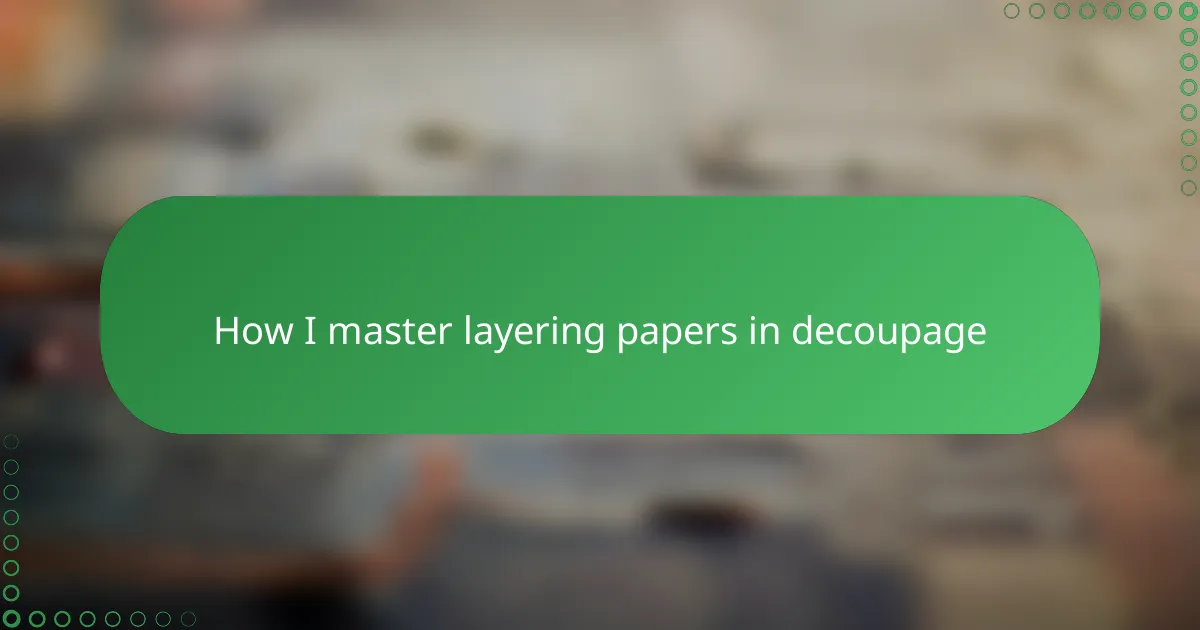Key takeaways
- Layering papers in decoupage enhances depth and individuality, transforming ordinary crafts into unique expressions.
- Choosing the right paper types, textures, and adhesives is crucial for successful layering, ensuring pieces sit well together.
- Mastering techniques like overlapping edges and sealing layers can significantly improve the quality and appearance of final projects.
- Common mistakes include using excess glue and rushing drying times; patience and attention to detail lead to polished results.
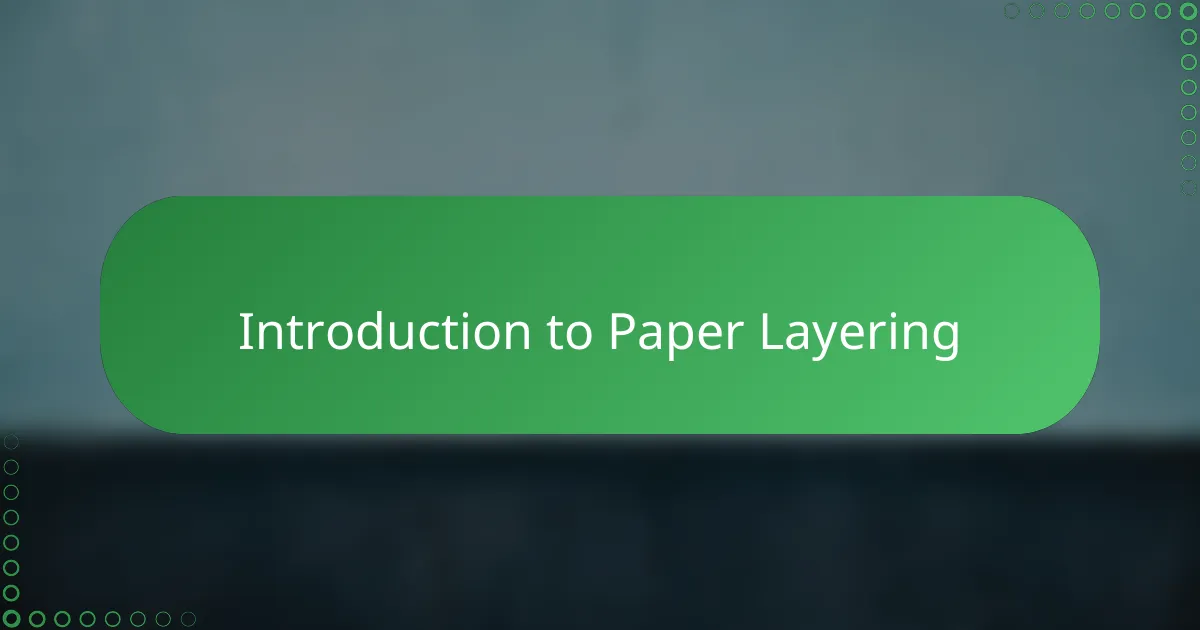
Introduction to Paper Layering
Paper layering in decoupage is a technique that always fascinated me because it adds such depth and personality to handmade crafts. Have you ever noticed how a single sheet of paper can feel flat but combine several, and suddenly the piece breathes with texture and life? That’s the magic I discovered early on—it’s like watching a simple idea unfold into something truly special.
When I first tried layering, I felt a bit overwhelmed by the number of options: different paper weights, patterns, and adhesives. But as I experimented, I realized that layering is more than just stacking papers—it’s about creating harmony and balance between each layer. This realization gave me confidence and a fresh appreciation for the art form.
Do you find yourself drawn to projects where every detail matters? For me, layering papers in decoupage is like telling a story, each layer revealing a new chapter. It turns an ordinary craft into an emotional expression, making every piece feel personal and unique.
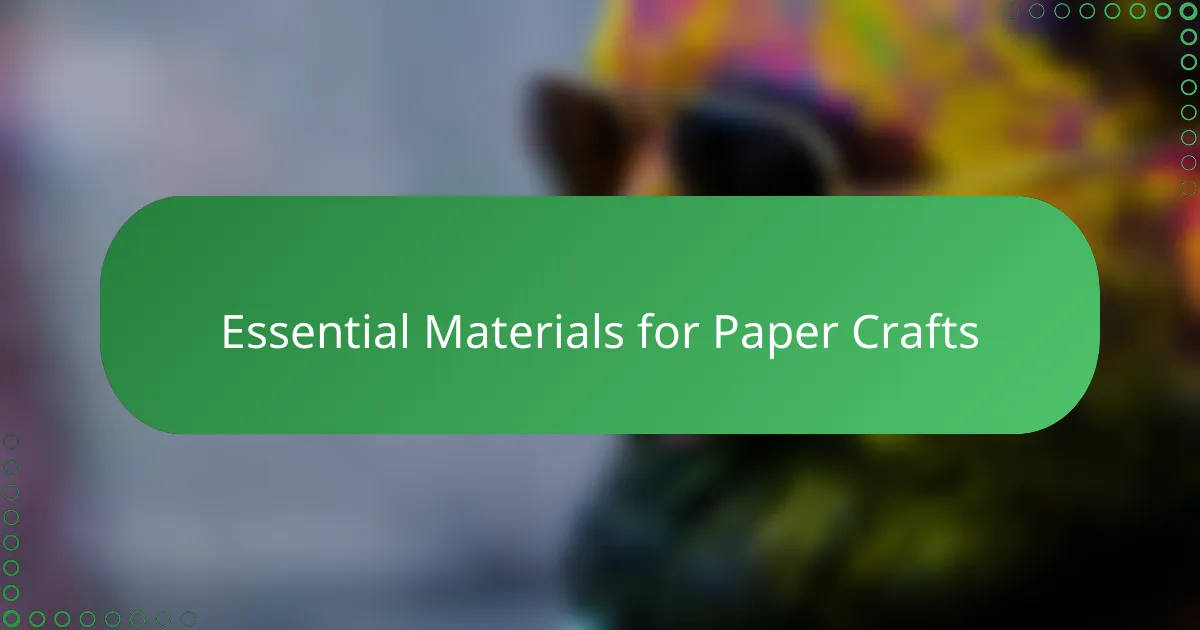
Essential Materials for Paper Crafts
When I started gathering materials for paper crafts, I quickly learned that not all papers are created equal. Choosing the right paper weight and texture is crucial—too thin, and the layers might wrinkle; too thick, and they become hard to manipulate. Have you ever been frustrated by papers that just don’t sit right together? That’s why I always keep a variety of cardstock and specialty papers on hand to see which blend best for each project.
Adhesives play a surprisingly big role in mastering layering. Early on, I struggled with glue that either soaked through or didn’t hold well, ruining delicate layers. Over time, I found that a good-quality decoupage medium or a brush-on glue gives you control without warping the paper. Finding the right adhesive saved me from many setbacks and made the layering process much more enjoyable.
Scissors and craft knives might seem basic, but having sharp, precise cutting tools changed everything for me. When edges are crisp and clean, layers fit together seamlessly, creating the polished look I aim for. Do you remember the satisfaction of a perfect cut? It’s those small details that make layering not just a technique, but an art form I love to explore.
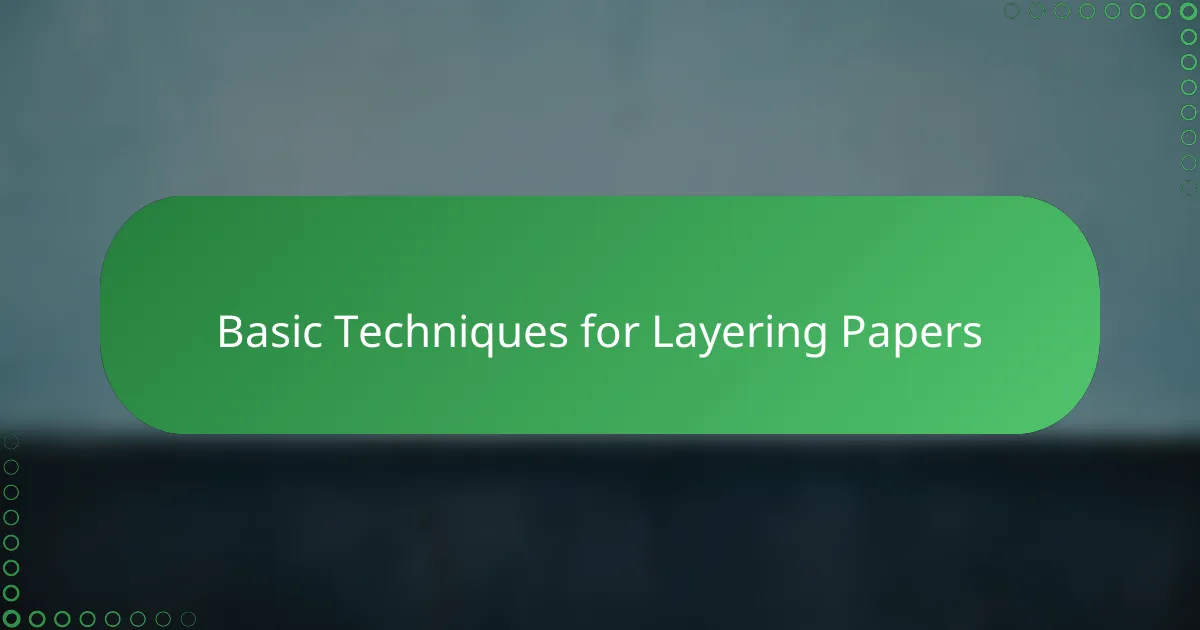
Basic Techniques for Layering Papers
Mastering the basics of layering papers begins with understanding how to position each sheet. I learned early that overlapping edges slightly creates a natural transition, avoiding harsh lines that can distract from the overall design. Have you noticed how gentle overlaps give your project a fluid, harmonious feel? That subtle shift changes everything.
Choosing the order of layers is another technique that shaped my approach. I usually start with a simple base layer and gradually build up with patterned or textured papers. This step-by-step method helped me avoid the chaos of piling papers without direction. It’s like composing a song, where each note must complement the last.
Another trick I often use is sanding or lightly distressing edges between layers. At first, it felt risky—what if I ruined my work? But adding that worn look actually adds depth and personality, making each layer stand out without overwhelming the piece. Have you ever experimented with edge treatments? It’s a small step that brings big rewards.
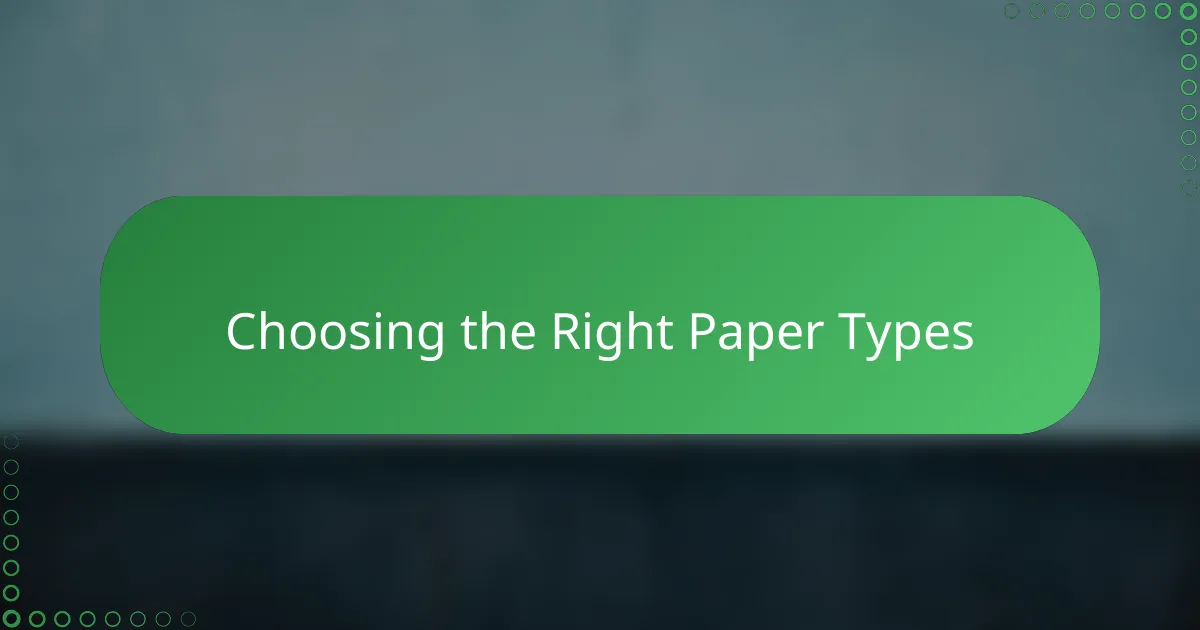
Choosing the Right Paper Types
Selecting the right paper types is the foundation of successful layering in decoupage. I often find myself drawn to lightweight tissue paper for delicate detailing because it melds smoothly onto surfaces without adding bulk. Have you ever tried mixing tissue with sturdier cardstock? That contrast creates a tactile experience that’s both beautiful and intriguing.
Texture plays a huge role in how layers interact. I discovered that combining smooth papers with subtly textured ones adds visual interest and prevents the piece from feeling flat. Sometimes, rough handmade papers surprise me with their organic charm, making each project feel truly one-of-a-kind.
Thickness matters more than I initially thought. At times, I struggled when I used papers that were too thick—they made layering feel stiff and unnatural. Now, I balance between thin and medium-weight papers to keep the layers flexible but stable, which makes the whole process much more enjoyable and manageable. Have you found that sweet spot in paper weight yet? It really changes the game.
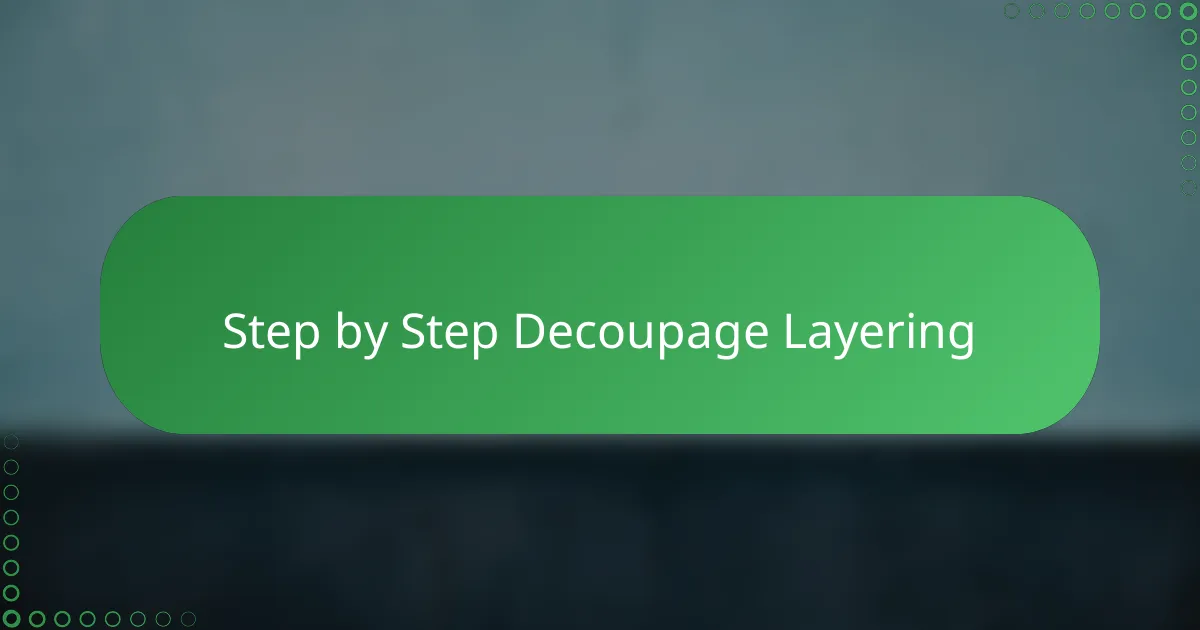
Step by Step Decoupage Layering
The first layer always sets the tone for the whole piece. I remember early on how carefully I spread glue on my base paper, making sure it was smooth to avoid wrinkles later. Have you ever felt that little thrill when that first sheet sticks perfectly, promising a strong foundation? It’s the moment when you know the layering journey really begins.
As I added the next layers, I learned to work slowly and deliberately, placing each piece with intention rather than rushing. Slightly overlapping edges became my go-to move—it feels like a gentle conversation between papers rather than a clash. When you pause and adjust a layer just right, doesn’t it feel like the project is revealing its personality?
One trick that transformed my process was sealing each layer before adding the next. At first, I thought skipping this step would save time, but I ended up with bubbled or shifted papers more times than I’d like to admit. Applying a thin coat of decoupage medium calmed those nerves, letting me build up layers with confidence. Have you tried this sealing step? It’s a simple moment that brings peace of mind and a polished finish.
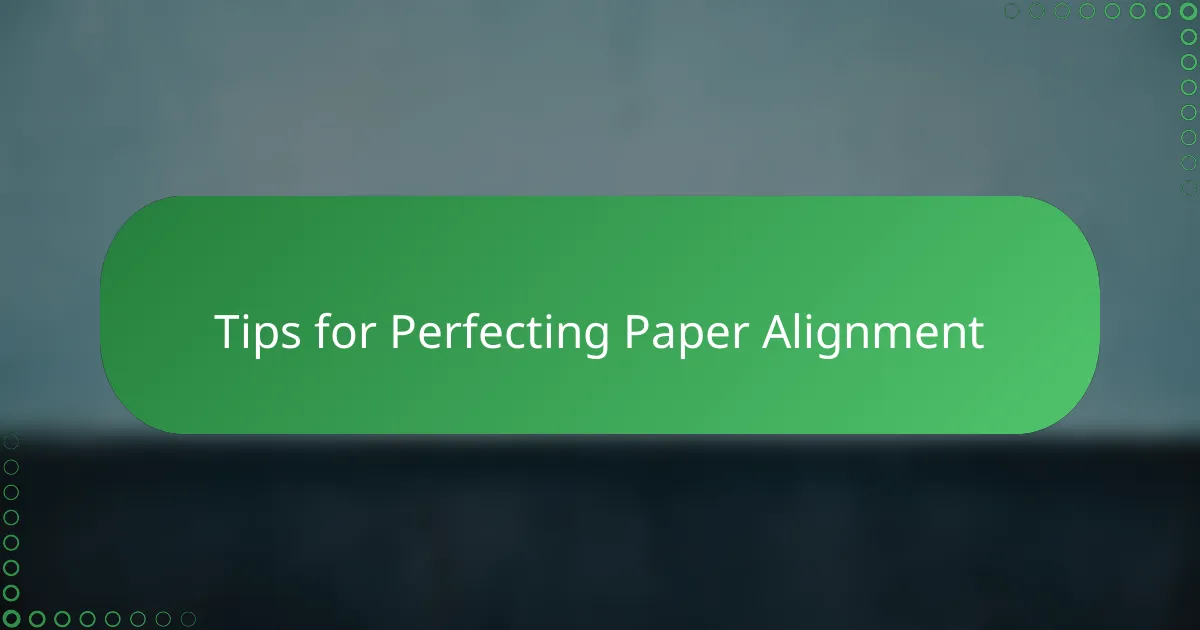
Tips for Perfecting Paper Alignment
Getting paper alignment just right took me a few tries before it clicked. I found that lightly marking guide points with a pencil on the base layer helped me position the next sheet more precisely. Have you ever struggled with papers that seem to shift the moment you place them down? Those subtle markers became my secret to steady, confident placement.
Another game changer was using a flat, hard surface and pressing gently from the center outward to smooth each layer into place. This method not only prevented bubbles but also kept edges aligned perfectly. I remember how satisfying it felt to see my layers sit snugly, as if they had been made to fit that way all along.
Sometimes, I remind myself to pause and step back before fixing a new layer permanently. Taking a moment to adjust alignment—even a hair’s breadth—can turn a “meh” layer into something spot-on. Do you find that little moments of patience make all the difference? To me, perfect alignment is as much about careful intention as it is about technique.
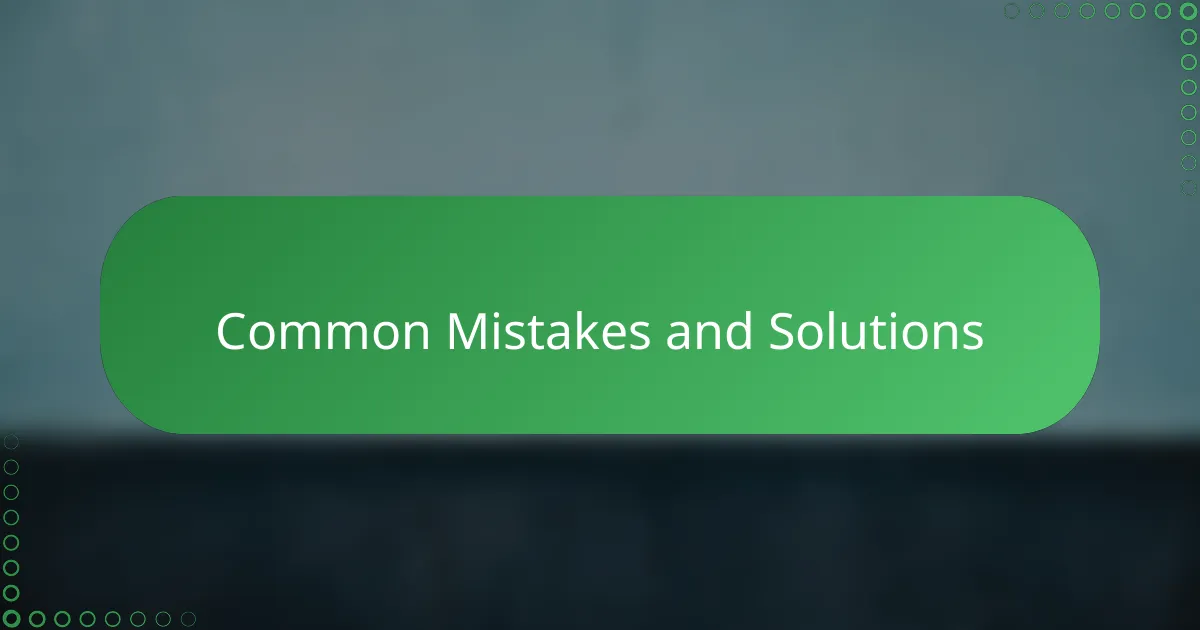
Common Mistakes and Solutions
One mistake I often made early in layering papers was using too much glue. It seemed logical to think more adhesive meant stronger hold, but what I quickly learned is that excess glue causes the paper to wrinkle or bubble. Have you ever lifted a layer only to find it crinkled? Since then, applying thin, even coats has been my go-to solution—less really is more.
Another tricky problem I faced was rushing the drying time between layers. Impatience led me to add sheets before the previous ones fully set, resulting in slipping or shifting papers. Waiting a bit longer—even if it feels like forever—transformed my work from messy to meticulous. Do you find patience hard when creativity is flowing? I do, but it’s a small price for polished layers.
Finally, misaligning edges was a frequent frustration. I remember projects where my layers looked chaotic because I didn’t take a moment to line them up precisely. Now, I gently position each paper and pause to adjust before sealing it down, which saves a lot of rework. Have you ever wished for a “pause button” in crafting? That little break makes all the difference in perfect layering.
